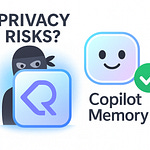Everyone tells you Copilot is only as good as the prompt you feed it. That’s adorable, and also wrong. This episode is for experienced Microsoft 365 Copilot users—we’ll focus on advanced, repeatable prompting techniques that save time and actually align with your work. Because Copilot can pull from your Microsoft 365 data, structured prompts and staged queries produce results that reflect your business context, not generic filler text.
Average users fling one massive question at Copilot and cross their fingers. Pros? They iterate, refining step by step until the output converges on something precise. Which raises the first problem: the myth of the “perfect prompt.”
The Myth of the Perfect Prompt
Picture this: someone sits at their desk, cracks their knuckles, and types out a single mega‑prompt so sprawling it could double as a policy document. They hit Enter and wait for brilliance. Spoiler: what comes back is generic, sometimes awkwardly long-winded, and often feels like it was written by an intern who skimmed the assignment at 2 a.m.
The problem isn’t Copilot’s intelligence—it’s the myth that one oversized prompt can force perfection. Many professionals still think piling on descriptors, qualifiers, formatting instructions, and keywords guarantees accuracy. But here’s the reality: context only helps when it’s structured. In most cases, “goal plus minimal necessary context” far outperforms a 100‑word brain dump. Microsoft even gives a framework: state your goal, provide relevant context, set the expectation for tone or format, and specify a source if needed. Simple checklist. Four items. That will outperform your Frankenstein prompt every time.
Think of it like this: adding context is useful if it clarifies the destination. Adding context is harmful if it clutters the road. Tell Copilot “Summarize yesterday’s meeting.” That’s a clear destination. But when you start bolting on every possible angle—“…but talk about morale, mention HR, include trends, keep it concise but friendly, add bullet points but also keep it narrative”—congratulations, you’ve just built a road covered in conflicting arrows. No wonder the output feels confused.
We don’t even need an elaborate cooking story here—imagine dumping all your favorite ingredients into a pot without a recipe. You’ll technically get a dish, but it’ll taste like punishment. That’s the “perfect prompt” fallacy in its purest form.
What Copilot thrives on is sequence. Clear directive first, refinement second. Microsoft’s own guidance underscores this, noting that you should expect to follow up and treat Copilot like a collaborator in conversation. The system isn’t designed to ace a one‑shot test; it’s designed for back‑and‑forth. So, test that in practice. Step one: “Summarize yesterday’s meeting.” Step two: “Now reformat that summary as six bullet points for the marketing team, with one action item per person.” That two‑step approach consistently outperforms the ogre‑sized version.
And yes, you can still be specific—add context when it genuinely narrows or shapes the request. But once you start layering ten different goals into one prompt, the output bends toward the middle. It ticks boxes mechanically but adds zero nuance. Complexity without order doesn’t create clarity; it just tells the AI to juggle flaming instructions while guessing which ones you care about.
Here’s a quick experiment. Take the compact request: “Summarize yesterday’s meeting in plain language for the marketing team.” Then compare it to a bloated version stuffed with twenty micro‑requirements. Nine times out of ten, the outputs aren’t dramatically different. Beyond a certain point, you’re just forcing the AI to imitate your rambling style. Reduce the noise, and you’ll notice the system responding with sharper, more usable work.
Professionals who get results aren’t chasing the “perfect prompt” like it’s some hidden cheat code. They’ve learned the system is not a genie that grants flawless essays; it’s a tool tuned for iteration. You guide Copilot, step by step, instead of shoving your brain dump through the input box and praying.
So here’s the takeaway: iteration beats overengineering every single time. The “perfect prompt” doesn’t exist, and pretending it does will only slow you down. What actually separates trial‑and‑error amateurs from skilled operators is something much more grounded: a systematic method of layering prompts. And that method works a lot like another discipline you already know.
Iteration: The Engineer’s Secret Weapon
Iteration is the engineer’s secret weapon. Average users still cling to the fantasy that one oversized prompt can accomplish everything at once. Professionals know better. They break tasks into layers and validate each stage before moving on, the same way engineers build anything durable: foundation first, then framework, then details. Sequence and checkpoints matter more than stuffing every instruction into a single paragraph.
The big mistake with single-shot prompts is trying to solve ten problems at once. If you demand a sharp executive summary, a persuasive narrative, an embedded chart, risk analysis, and a cheerful-yet-authoritative tone—all inside one request—Copilot will attempt to juggle them. The result? A messy compromise that checks half your boxes but satisfies none of them. It tries to be ten things at once and ends up blandly mediocre.
Iterative prompting fixes this by focusing on one goal at a time. Draft, review, refine. Engineers don’t design suspension bridges by sketching once on a napkin and declaring victory—they model, stress test, correct, and repeat. Copilot thrives on the same rhythm. The process feels slower only to people who measure progress by how fast they can hit the Enter key. Anyone who values actual usable results knows iteration prevents rework, which is where the real time savings live.
And yes, Microsoft’s own documentation accepts this as the default strategy. They don’t pretend Copilot is a magical essay vending machine. Their guidance tells you to expect back-and-forth, to treat outputs as starting points, and to refine systematically. They even recommend using four clear elements in prompts—state the goal, provide context, set expectations, and include sources if needed. Professionals use these as checkpoints: after the first response, they run a quick sanity test. Does this hit the goal? Does the context apply correctly? If not, adjust before piling on style tweaks.
Here’s a sequence you can actually use without needing a workshop. Start with a plain-language draft: “Summarize Q4 financial results in simple paragraphs.” Then request a format: “Convert that into an executive-briefing style summary.” After that, ask for specific highlights: “Add bullet points that capture profitability trends and action items.” Finally, adapt the material for communication: “Write a short email version addressed to the leadership team.” That’s four steps. Each stage sharpens and repurposes the work without forcing Copilot to jam everything into one ungainly pass.
Notice the template works in multiple business scenarios. Swap in sales performance, product roadmap updates, or customer survey analysis. The sequence—summary, professional format, highlights, communication—still applies. It’s not a script to memorize word for word; it’s a reliable structure that channels Copilot systematically instead of chaotically.
Here’s the part amateurs almost always skip: verification. Outputs should never be accepted at face value. Microsoft explicitly urges users to review and verify responses from Copilot. Iteration is not just for polishing tone; it’s a built-in checkpoint for factual accuracy. After each pass, skim for missing data, vague claims, or overconfident nonsense. Think of the system as a capable intern: it does the grunt work, but you still have to sign off on the final product before sending it to the boardroom.
Iteration looks humble. It doesn’t flaunt the grandeur of a single, imposing, “perfect” prompt. Yet it consistently produces smarter, cleaner work. You shed the clutter, you reduce editing cycles, and you keep control of the output quality. Engineers don’t skip drafts because they’re impatient, and professionals don’t expect Copilot to nail everything on the first swing.
By now it should be clear: layered prompting isn’t some advanced parlor trick—it’s the baseline for using Copilot correctly. But layering alone still isn’t enough. The real power shows when you start feeding in the right background information. Because what you give Copilot to work with—the underlying context—determines whether the final result feels generic or perfectly aligned to your world.
Context: The Secret Ingredient
You wouldn’t ask a contractor to build you a twelve‑story office tower without giving them the blueprints first. Yet people do this with Copilot constantly. They bark out, “Write me a draft” or “Make me a report,” and then seem genuinely bewildered when the output is as beige and soulless as a high school textbook. The AI didn’t “miss the point.” You never gave it one.
Context is not decorative. It’s structural. Without it, Copilot works in a vacuum—swinging hammers against the air and producing the digital equivalent of motivational posters disguised as strategy. Organizational templates, company jargon, house style, underlying processes—those aren’t optional sprinkles. They’re the scaffolding. Strip those away, and Copilot defaults to generic filler that belongs to nobody in particular.
Default prompts like “write me a policy” or “create an outline” almost always yield equally default results. Not because Copilot is unintelligent, but because you provided no recognizable DNA. Average users skip the company vocabulary, so Copilot reverts to generic, neutral phrasing. And neutrality in business writing almost always reads as lifeless. What professionals actually need isn’t filler—it’s alignment.
Compare the difference. A lazy prompt says, “Draft a remote work policy.” The reply will sound stiff, loaded with off‑the‑shelf business clichés. Add context, though—“Draft a remote work policy for a mid‑sized consulting firm that prizes client responsiveness, flexible schedules, and our core value of ‘ownership at every level’”—and suddenly the tone shifts. The draft doesn’t sound like it came from a random template. It sounds like something your HR team actually worked on last quarter. The secret wasn’t more words—it was sharper words.
You can see it in HR examples. One team types “Write a workplace dress code” and Copilot spits out the same soulless, bureaucratic language you could hang in any corporate lobby from the 1990s. Another team provides context: “Write a dress code for our creative agency that values brand authenticity, informal professionalism, and client‑friendly presentation.” The AI now mirrors your language and culture. Same system, different scaffolding. The first sounded like compliance drudgery. The second sounded like it came straight from your handbook.
This is where people overcomplicate things. They think including context means pasting an entire company handbook into the prompt. Wrong. Context doesn’t equal bulk—it equals relevance. You don’t need to overwhelm Copilot with the whole intranet. You need the handful of pieces that actually define your environment. That might be three values, five vocabulary terms, or the skeleton of a template you always use. Professionals know: include the few key elements that anchor the draft to your workplace, and let Copilot fill in the rest.
And here’s a practical way to do that: tap into what Microsoft already integrates. Copilot pulls from your company data through Microsoft Graph and tools like Context IQ. If you need precision, point it toward the right documents or examples so it has the grounding to work from. Don’t just trust it to invent a voice in isolation—give it access to the right shelves in the library. That’s how you make its results sound like they actually belong to your business.
One more pro-level habit: reuse. Once you’ve constructed a solid, context‑rich prompt that reliably outputs high‑quality drafts, don’t reinvent the wheel for the next project. Save that cleaned‑up prompt as a reusable template so you—or colleagues—can reapply it. Microsoft even encourages saving and sharing effective prompt structures. Professionals cycle prompts, amateurs retype them.
The difference is night and day. With context, Copilot stops being a stranger pretending to write for you and starts sounding like an insider who’s been in your staff meetings for years. Without it, you’ll keep getting boilerplate. You wouldn’t expect a new hire to speak fluently in your company’s voice on day one without any onboarding. Copilot is no different. Treat it like a colleague, not a wizard.
Iteration gave you process. Context gave you substance. But there’s still another dimension shaping what Copilot delivers—something you may not even notice you’re signaling. Because phrasing the same request two different ways doesn’t just slightly adjust the result—it can send you into two utterly different worlds.
Tone: The Hidden Lever
Tone is the hidden lever most people never touch. They fixate on content—keywords, requirements, structure—convinced that checking boxes guarantees quality. Yet the secret isn’t just what you say. It’s how you ask. Copilot listens to phrasing cues as carefully as it listens to commands, and tone tells it which role to play: rigid executor, creative brainstormer, or collaborative teammate.
Picture three commands. First: “Write as a compliance summary for an external audit.” That’s directive. The engine locks into rule-following mode, producing safe, standardized prose—perfect for legal, financial, or HR policies where deviation is a liability. Second: “Brainstorm three options for presenting this campaign idea.” That’s exploratory. Copilot expands its range, testing variations and offering creative spins. Third: “Act as a collaborative teammate and propose alternatives for this draft.” That’s collaborative. Now the system behaves like an idea partner, building with you in conversation. Same tool. Three tones. Three distinctly different results.
If this feels surprising, it shouldn’t. Microsoft’s own documentation says slight wording shifts alter outputs significantly. That isn’t a flaw—it’s the feature. Professionals exploit this by adjusting tone first when an output feels flat. Before rewriting your entire prompt, test a one-word swap: “summarize” becomes “advise,” “analyze” becomes “brainstorm,” “draft” becomes “collaborate.” Watch how a lifeless summary suddenly feels like quick meeting notes, or how a bland draft turns into a lively pitch. Tone isn’t garnish. It’s a steering wheel.
Let’s return to food, quickly, since you seem to digest metaphors better than plain instruction. Walk into a restaurant and bark, “Cook this dish exactly as written.” The chef obeys mechanically. That’s directive. Now say, “I want something Mediterranean, heavy on vegetables.” The chef interprets style—that’s exploratory. If instead you hand them a basket of ingredients and ask, “What could we try?” you’ve invited collaboration into the kitchen. Copilot reacts no differently. The recipe exists, but tone determines the chef’s personality.
Here’s a quick exercise you can try the next time Copilot disappoints. If the output feels flat, don’t panic-edit the text yourself. Just ask: “Rephrase this as quick, actionable takeaways for my sales team.” It’s trivial. It takes seconds. Yet the change in energy is immediate. Suddenly, instead of bland paragraphs, you get a tidy list that’s tailored to an audience. That wasn’t Copilot becoming smarter—it was you pulling a lever you didn’t realize you had.
And yes, average users ignore tone because they think it’s ornamental—window dressing layered onto “real” commands. Professionals know style defines persona. If you don’t set tone, Copilot defaults to Generic Writer Mode™, the droning intern who delivers sentences designed to offend no one and impress even fewer. Specify tone, and you give the AI an identity: compliance officer, creative partner, strategic advisor. Tone tells Copilot who it is in this conversation, not just what it should do.
The truth? Adjusting tone is often the fastest, most efficient refinement step. A mediocre draft doesn’t always mean your content was wrong. It means your framing was lazy. Readers waste cycles slapping tone on after the fact—editing blandness out line by line—when they could have prevented it entirely by commanding tone at the start. The pros don’t fix tone after the draft. They shape it before the draft.
Iteration gives your process structure. Context supplies the scaffolding. Tone, though, is what gives the final product shape and character. Leave tone out, and you get mechanical blandness. Harness tone deliberately, and Copilot becomes a tool that adapts as flexibly as a real colleague. These three levers—iteration, context, tone—turn Copilot from a blunt document generator into something resembling a smart partner.
And just when you think you’ve mastered those basics, the underlying model shifts again. The system itself evolves, with more nuance, deeper memory, and sharper alignment. Which means the habits you’ve built either become magnified strengths—or glaring liabilities.
Enter GPT-5: More Brain, Same Rules
Enter the newer generation of models: more brainpower, same rules. People assume a jump in technology means fewer skills are required. Spoiler: it doesn’t. The latest updates simply process your instructions with sharper nuance, stronger context retention, and less wandering when you ask for long-form work. That’s it. It listens better. But if you thought a smarter engine means you can skip prompt discipline, you’ve misunderstood the entire point of progress.
Here’s the real upgrade. Newer models track context across longer conversations, which lets you build layered prompts without the system forgetting what you said three turns ago. They’re more capable of following subtle distinctions—when you ask for tone shifts or role-based voices, you actually get what you wanted instead of a half-hearted guess. They also maintain more coherent long-form structures instead of drifting into repetition or off-topic tangents. This is progress, yes, but notice what I did not say: these upgrades do not eliminate the need to prompt with skill.
The myth spreading around is predictable: “The better the model, the less prompting matters.” Wrong. That’s like giving someone a high-performance car and assuming it drives itself. You still need to know how to use the steering wheel. If you can’t handle basics, the upgraded machine won’t rescue you. It will magnify your mistakes—only faster, only smoother, only with more misplaced confidence. Improved models don’t reduce your responsibility. They increase it.
Iteration, context, and tone still govern everything. But now the stakes are higher because errors scale. If you feed vague or contradictory demands, the system won’t obviously flail out of control the way older versions did. Instead, it will produce polished, well-written nonsense that looks good at first glance. That’s more dangerous. Amateurs will accept it as final. Professionals will notice the disconnect and correct course. The stronger the model, the bigger the gulf between those two groups.
Let’s walk through an example. Say you’re building an executive report. Older models often lost track of earlier points—they’d forget key terms they coined in the opening, or introduce inconsistencies in conclusions. The newer models, on the other hand, hold onto the thread. You can say, “Draft section one as a narrative summary,” then follow with, “Extend those points in section two with graphs and risk analysis.” The system connects the dots. It remembers and reinforces your earlier direction. The report feels integrated, not stitched together.
Does that sound like freedom from prompting technique? No. Because if you clutter your first request with ten conflicting instructions, a newer model won’t collapse visibly. It will generate fluid, professional-sounding content that impresses you on delivery—until you realize it’s irrelevant. That surface polish masks fundamental misalignment. The average user shrugs and calls it done; the professional runs verification before signing off. And verification matters more than ever. Copilot can annotate where it pulled details from. You can literally ask: “Point out which emails, meeting notes, or documents support this section.” That way, you don’t just admire the fluency of the prose—you check the foundation.
This is the hidden twist: better tools don’t flatten the playing field. They widen it. Advanced models amplify good habits and punish lazy ones. The disciplined pro who already knows how to iterate now gets more leverage—greater complexity handled without collapse, deeper prompts that carry through cleanly. The casual user who still believes in “perfect prompt” mythology just generates higher-quality mediocrity. The words read better, but the substance remains shallow. Strong input multiplies output; sloppy input multiplies garbage.
So your guiding principle doesn’t change—it sharpens. Systematic prompting—layered process, contextual scaffolding, deliberate tone—remains the only reliable method. The model is an amplifier, not a miracle worker. Treat it like a sharp tool, and you cut cleaner. Fumble it, and you just injure yourself with elegance.
Which is why the critical move now is to stop chasing fantasies and start building systems. Systems for iteration. Systems for context management. Systems for tone control. The latest models reward structure with coherent, high-quality results. Ignore structure, and you get dressed-up nonsense. And that, really, sets the stage for the final point you need to carry forward.
Conclusion
Professionals don’t waste hours trying to conjure the mythical “perfect prompt.” They build systems. Iteration, context, and tone—three levers that make Copilot outputs converge toward intelligence instead of collapsing into filler. The truth is painful but simple: prompting isn’t magic, it’s practice. Structure wins. Every. Time.
Now the part where you actually do something. Subscribe, and then drop a comment describing your toughest Copilot prompt so far—one flop and one small win. Yes, type it out. You’ll get better, and we’ll know what failures are worth dissecting next.
Choose discipline. Choose clarity. Hit the button.










